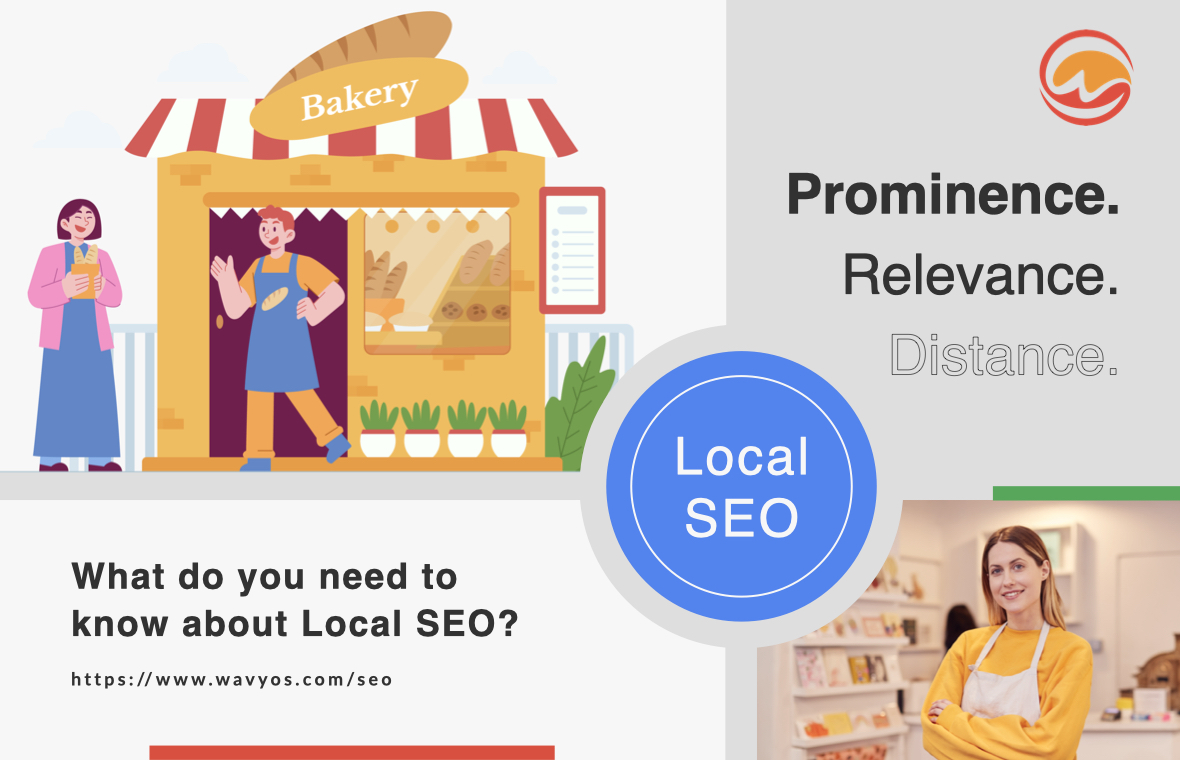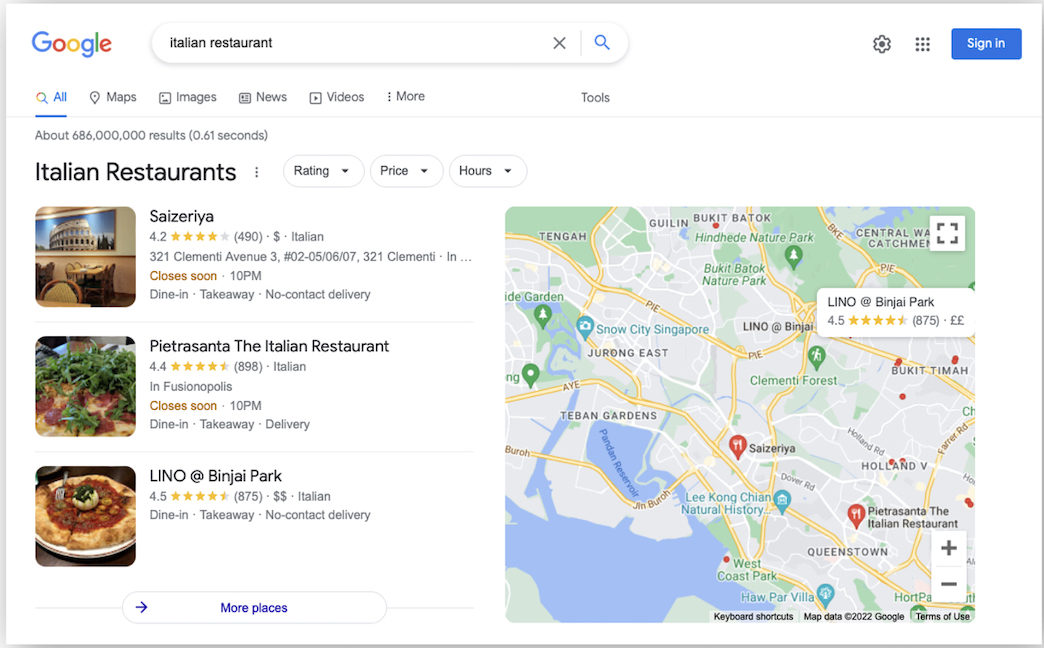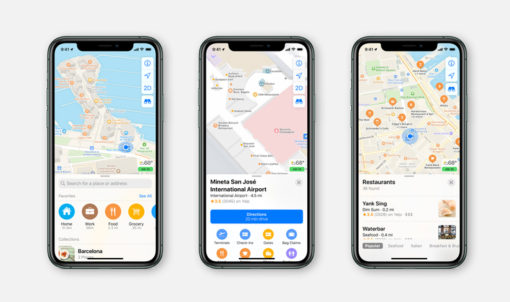What do you need to know about Local SEO?

What is Local SEO?
SEO is the process to improve search engine visibility and ranking for websites. But the fact is not all searches are meant to search globally. Out of all of the searches, nearly half of them are seeking information or services from their immediate area. In order to provide more relevant search results to these users, Google has added a number of extra ranking factors in the local search algorithm.
Why is Local SEO important?
By following local SEO best practices, businesses with brick-and-mortar outlets can improve traffics from searches performed by customers in nearby locations. They are not only easier to find. They minimize the chance of missing out potential opportunities for customers who are ready to spend in their area.
How is Local SEO different?
Let’s use the following example to explain. You’ll understand what Local SEO is about in no time.
It is very likely that Apple.com will rank number 1 no matter where and when you google ‘iPhone’. However, if you search for ‘pizza delivery’ at work and at home respectively, provided that they are far apart enough, you will probably get two set of entirely different results. Pizza restaurants that are opened and closer to where you are should generally rank higher.
The main difference here is Google identifies you have a local search intent. It is assuming you’d expect a pizza delivered from a restaurant nearby. Then it adds distance of the restaurant into its calculation along with other ranking factors. As you might have noticed, the user doesn’t even need to include a place name likes ‘pizza delivery Hong Kong’ or ‘near me’ in his/ her search.
The 3 Key Elements of Local SEO: Distance, Relevance and Prominence
The search algorithm is always a secret to the outside world. What is clear though, is what works in regular SEO still applicable to local SEO. They have a lot in common. Either way you have to convince Google you got the prominence to rank top for searches that are of relevance. As we can see from the ‘pizza delivery’ example, perhaps the most obvious difference is the user-to-business distance.
According to Google, local search results are based primarily on distance, relevance, and prominence. A combination of these factors helps them find the best match for their users.
Distance
Distance considers how far each potential search result is from the location term used in a search. If a user doesn’t specify a location in their search, Google will calculate distance based on what they do know about their location.
Prominence
Prominence refers to how well known a business is. Some places are more prominent in the offline world, and search results try to reflect this in local ranking. For example, famous museums, landmark hotels, or well-known store brands are also likely to be prominent in local search results.
Prominence is also based on information that Google has about a business, from across the web, like links, articles, and directories. Google review count and review score factor into local search ranking. More reviews and positive ratings can improve your business’ local ranking. Your position in organic search results is also a factor, so search engine optimization (SEO) best practices apply.
Relevance
Relevance refers to how well a local Business Profile matches what someone is searching for. As such you need to add complete and detailed business information to help Google better understand your business and match your profile to relevant searches.
Google Maps Pack
When we optimize our business for local SEO, somehow it is not the traditional link-based search results matter most. The Google Maps Pack is indeed the most sought-after position. Also commonly known as the Google Local Pack or the Google 3 Pack Ranking, it is a set of three highlighted Google-Maps-based results shown above the organic results on the search engine result page (SERP). According to statistics, it grabs as much as 44% of the total clicks on SERPs.
Here’s what it looks like:

What do you need to do to optimize your website for Local SEO then?
We have seen from the above explanation distance or proximity is one of the 3 key elements in Local SEO. However, to start working for your favorite spot on the local SERP, merely having a correct business address is not enough. To supercharge your local search, the first thing you need to do is to register and create your business account in ‘Google My Business‘. After that you have to enhance the localized content of your website to make it more prominent and relevant.
Google My Business
Sometimes Google relies on users to provide them with all the critical information of a business. For this reason not just business owners, everyone can add a place onto Google Maps. All that Google requires is the business name, location, and category. Once it is checked and created, that place is opened to all public users to leave reviews, add photos, ask and even answer questions.
By creating a Google My Business account, you can add your own place, or claim back one that has been created by other users. And you’ll also be able to access and manage your account profile with Google My Business.
Using Google My Business for Local SEO
In essence Google My Business is the fundamental tool that gets your business listed and seen on Google.
Apart from filling out everything you can with the most accurate, up-to-date and complete information about your business, make sure you use relevant keywords in your business description, posts, answers and responses so as to tell Google what you’re trying to rank for.
Customer Reviews is a heavy factor too. It gives Google another dimension of trustworthiness to a business. You don’t want to miss it. So encourage your customers to leave positive reviews. But don’t panic when you see negative reviews coming in. Respond to them, try to understand and resolve the issues with the customers.
Finally you have to treat your Google My Business account like all the other social channels of your business. You have to keep it active and fresh by uploading new photos and publishing new posts regularly.
Read Google My Business for Local SEO for more useful tips about optimizing your Google Business Profile to get ranked on Google Maps.
Localized Content
As with your Google My Business page, your website must be giving out accurate information about your business and sending the right messages to your target audiences.
Have a solid Contact and About page
A website may have dozens of pages. On the Contact and About page there is a few things you have to pay special attention to. Be sure to include a full business name, address, phone number (NAP) and possibly a Google Map. All such information must be consistent with your Google My Business page and everywhere they are mentioned on your site.
Local Landing Pages
If you are running a multi-location business, each of the location should have its own landing page. Create dedicated pages with detail and easy-to-spot NAP. Effective location landing pages should also include content that will be most helpful to customers. Users can find everything they need about a specific branch or location without any hiccup.
But be careful if your offerings are identical from location to location. It could be difficult to make fully localized and unique content on each location page. You may just use a page or a locator widget to have all addresses and contact information of each location listed. You don’t risk creating many thin and replicate pages that will weaken the overall quality of your website.
Local Photos and Videos
You can increase your chances of a conversion by using local-specific rich media on your location landing pages. Don’t forget to optimize them with keywords to extend the reach to your target audiences.
Customer Reviews
Customer reviews might perhaps be the first thing to see when users are searching for good products or services online. Besides the impact that they can have on search rankings, strong reviews and high ratings also help create powerful social proof to boosting customer confidence.
You shouldn’t totally rely on your Google My Business, you should do your own interview with your customers and put this content on your site/ location landing page as customer testimonials or success stories.
List Your Business on Local Directories
There are local directories and business listing sites that you need to consider. For example, if you are running a restaurant, openrice.com is the obvious choice. Find and get listed on them.
Citations
A citation is a mention of your business by referencing its business name, address and phone number. It is an element that Google uses to rate the online authority of your website. Unlike links, citations don’t need to link to you website.
Generating frequent and positive reviews and citations has become a go-to strategy for local businesses and marketers.
Go Local SEO or Not?
Simply speaking if you run a business that is relying heavily on a local customer base and connection, you must start building your authority with Local SEO. On the contrary, if your business is serving a nation-wide or world-wide market, or it is operating online and doesn’t have a physical storefront, Local SEO is not your top priority.
Final Takeaway: Apple Maps is a platform local businesses can’t ignore

We are not saying Apple is going to share its Maps data with Google. And for now definitely Google remains a top priority for brands and businesses looking to build their online presence. But with the increased popularity of Siri and Apple Maps, apparently Apple is a platform critical for businesses too.
Working in a way very similar to Google My Business, you can register or claim your business places on Apple Maps to help customers find you. Where you can also manage your business information that’s shown in Maps.
Surprisingly or not, Apple has also taken one step further. If you have an app of your own, you can link it to your listing in Maps through App Clip. Depending on what is being offered in your app, users can have the options of downloading a coupon, placing an order, or do a booking from within Maps when they discover your business. With a polished user experience, this takes attracting and retaining new customers to a whole new level.
Other related topics that you may be interested in:
- Find out more about our SEO Services in Hong Kong
- SEO 101: Behind the SEO Scene
- SEO FAQs: The Top 10 SEO Questions New Clients Ask
- How to optimize a WordPress website for Google ranking?
- Why your website is not getting traffic? Follow these 4 steps to fix it.
- What is a SEO-Driven Website Plan? Why is it important to the success of making a new website?
- Why are Internal Links Important for SEO?
- Winning International SEO Strategy & Best Practices
- How to do SEO for WooCommerce?
- Let’s talk about Image SEO
Need a hand to help improve your local SEO? Please come talk to us!
Email: [email protected]
WhatsApp: +852 6099 4407
Contact us or submit your question to us here.
